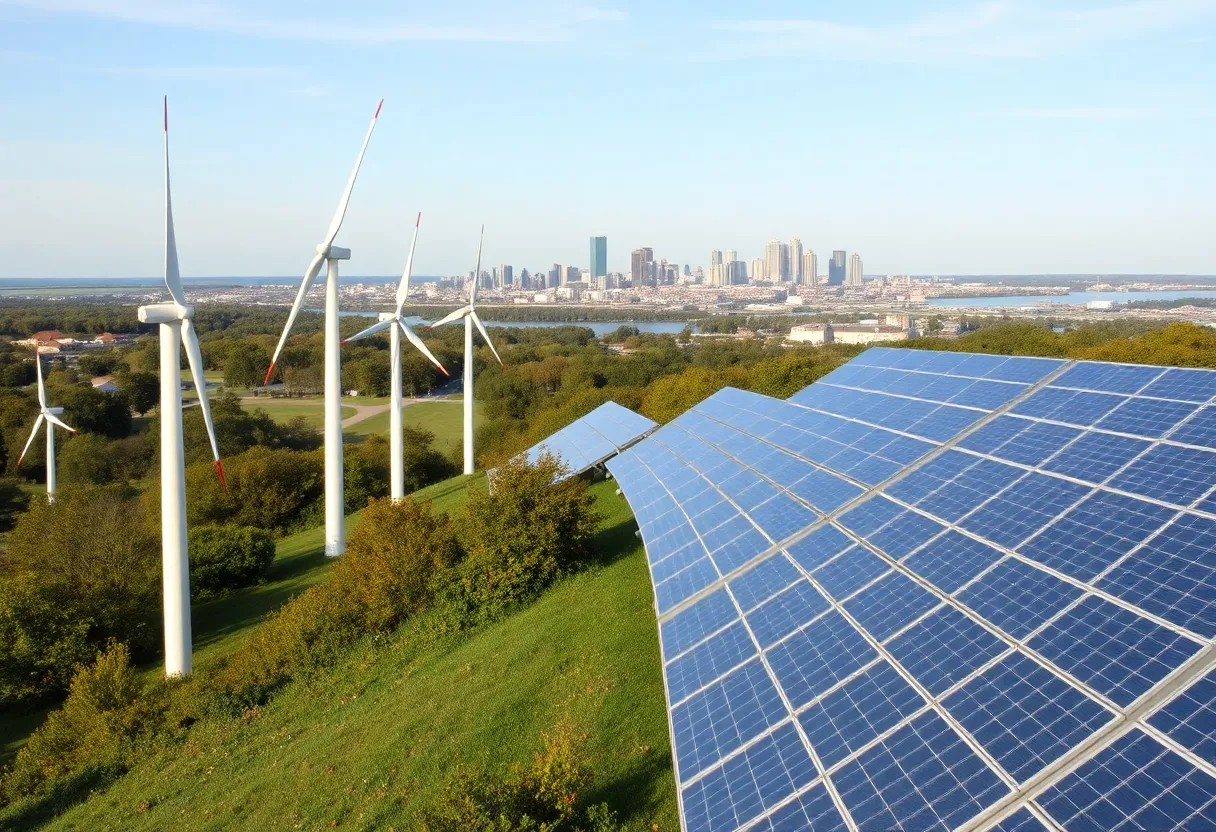News Summary
The Rhode Island Public Utilities Commission has approved new utility rates for Rhode Island Energy, effective April 1. Despite public outcry against increases, the summer electric prices will see a nearly 39% reduction, providing some relief to residential customers. However, higher associated fees will offset these savings, and ongoing capital investments will lead to increased costs. The commission criticized the utility’s proposed budgets but ultimately approved reduced capital expenditures. The state continues to invest in renewable energy and assist low-income residents amid rising electricity rates.
Providence, Rhode Island – The Rhode Island Public Utilities Commission (PUC) has approved various adjustments to utility rates for Rhode Island Energy, which will take effect on April 1. This decision comes following a recent meeting attended by a packed crowd of concerned customers who voiced their frustrations regarding high utility bills and urged the commission to reject any proposed increases.
Despite the push from the public, state law restricts the regulators’ ability to deny supply rates set by Rhode Island Energy, which are determined by the market prices paid to third-party suppliers. In a relief to some customers, the newly established summer electric prices will experience a significant reduction, dropping nearly 39% from current winter rates.
Under the new rate structure, average residential customers who use 500 kilowatt-hours monthly can expect a savings of approximately $31 on their supply charges this summer. Although the decrease in supply charges offers a degree of financial relief, higher customer fees associated with transmission, renewable energy, and energy efficiency programs will partially offset these savings. Additionally, charges will increase to support ongoing capital investments in electric and gas infrastructure.
In a critical review of Rhode Island Energy’s proposals, the PUC expressed disappointment with the utility’s parent company, PPL Corp., which sought a significantly larger capital budget than its predecessor, National Grid. The proposed electric capital budget for fiscal year 2026 was over double that of National Grid’s last year’s figures, and the gas capital spending proposal was $16 million more than what was previously allocated. Ultimately, the PUC approved an electric budget of $131 million for fiscal 2026 after reducing the initial proposal by 18%. The gas capital budget was set at $179.5 million, reflecting a reduction of nearly 20% from what was originally proposed.
Initial calculations suggested that Rhode Island Energy’s electric capital plan could lead to an average monthly rate increase of $1.01, while the gas budget could have caused approximately $78.58 in annual increases for customers. Despite these cuts, the president of Rhode Island Energy registered disappointment regarding the reduced budget but emphasized a commitment to maintaining safety and reliability in service.
In a move designed to alleviate some financial burdens, about 25% of Rhode Island Energy’s 780,000 customers currently participate in community aggregation plans, which allow them to choose lower electric rates. The default summer electric rate from the community aggregation will be 10.014 cents per kilowatt-hour, marginally lower than Rhode Island Energy’s proposed supply rate of 10.2 cents per kilowatt-hour.
Overall, despite any reductions in supply charges, Rhode Island’s total average residential electricity rates hover around 28.7 cents per kilowatt-hour, positioning it as one of the highest rates in the nation. This increase in rates continues to add strain for many customers, particularly as discussions around further regulations and additional assistance for those facing high bills are underway among state legislators.
In the past five years, the state has invested $1.3 billion into renewable energy projects, energy efficiency, and programs aimed at aiding low-income residents. As the changes approach, customers will likely be monitoring these developments closely as PUC and state officials are called upon to provide more robust solutions to ongoing utility rate challenges.
Deeper Dive: News & Info About This Topic
- Providence Journal: High Electric Bill in Rhode Island
- Wikipedia: Electricity
- ABC6: Rhode Island Utilities Officials Meeting
- Google Search: Rhode Island Energy electric bills
- Turn to 10: Breakdown of Charges on Electric Bill
- Encyclopedia Britannica: Public Utilities
- WPRI: Regulators and Electricity Rate Hike
- Google News: Rhode Island energy rates

Author: STAFF HERE PROVIDENCE WRITER
The PROVIDENCE STAFF WRITER represents the experienced team at HEREProvidence.com, your go-to source for actionable local news and information in Providence, Providence County, and beyond. Specializing in "news you can use," we cover essential topics like product reviews for personal and business needs, local business directories, politics, real estate trends, neighborhood insights, and state news affecting the area—with deep expertise drawn from years of dedicated reporting and strong community input, including local press releases and business updates. We deliver top reporting on high-value events such as WaterFire, Rhode Island International Film Festival, and Rhode Island Comic Con. Our coverage extends to key organizations like the Greater Providence Chamber of Commerce and Providence Warwick Convention & Visitors Bureau, plus leading businesses in finance and manufacturing that power the local economy such as Citizens Financial Group and Textron. As part of the broader HERE network, we provide comprehensive, credible insights into Rhode Island's dynamic landscape.





